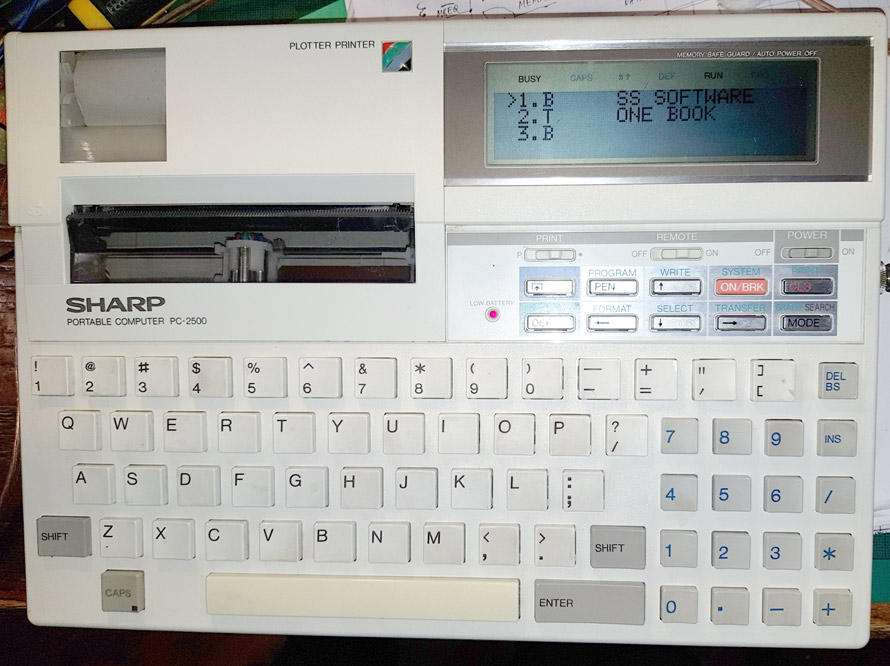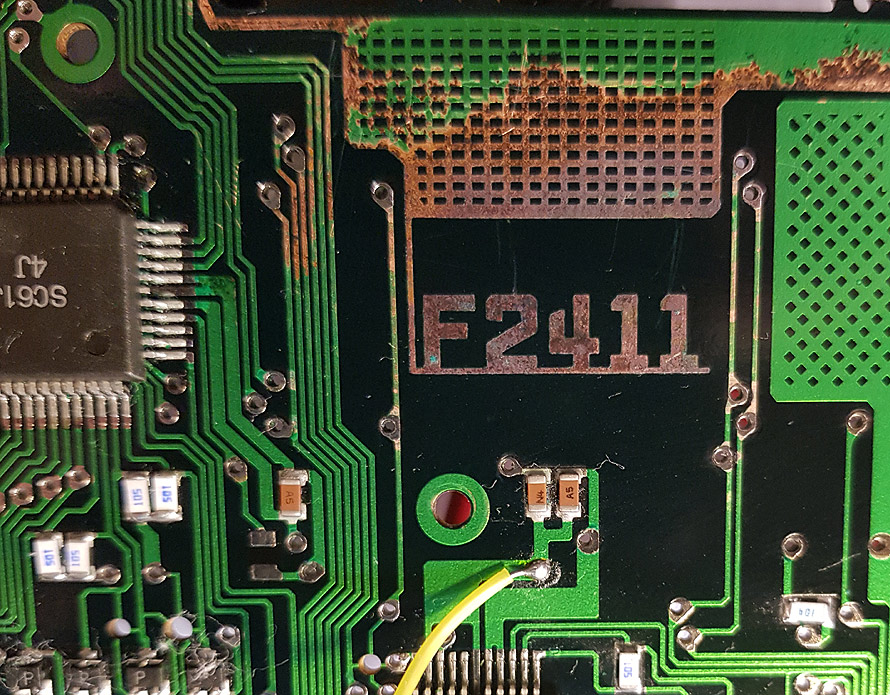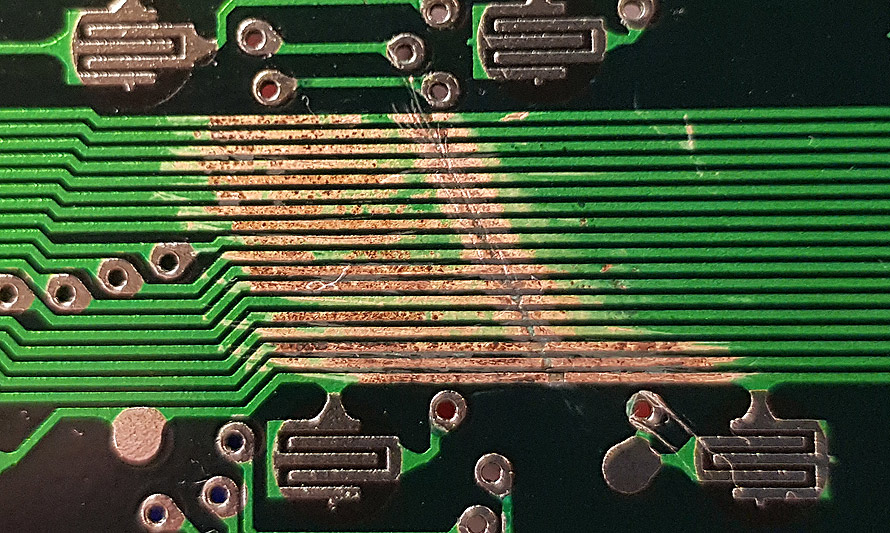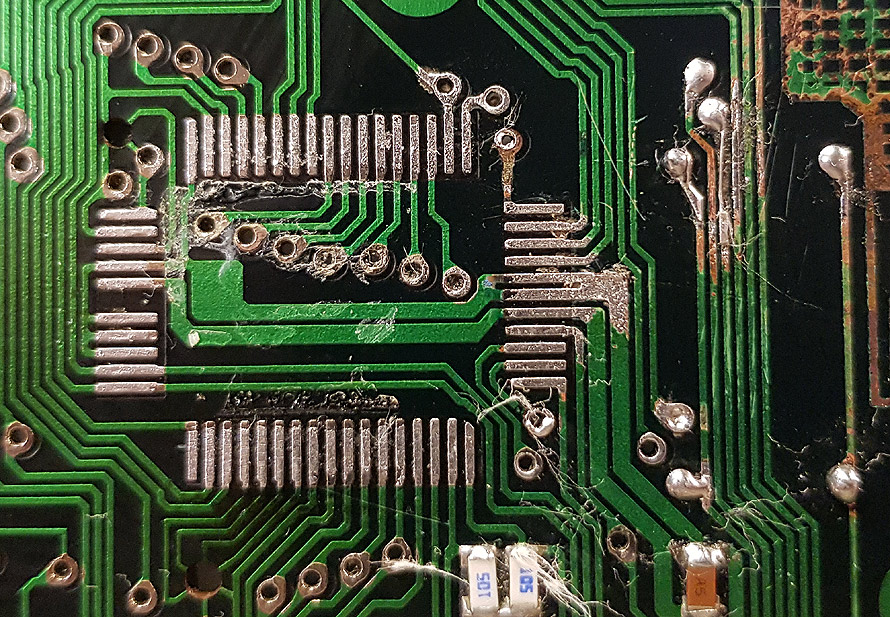Good fellow donated my collection with a new item- Sharp PC-2500. The only big problem- this old computer had caustic batteries inside and they leaked. Alkaline used in the batteries has a very ugly feature- it can travel under conformal coating along copper traces. All this made this computer DOA.

In this picture, the computer is a bit working. Still missing some parts of the image, one keyboard key is not responsible and software freezes. It is possible that damage to PCB is not only eroded traces, but there is a side effect of CMOS technology- the resistance of the PCB is lowered and it may cause problems with high resistance CMOS circuitry. Any unclean spot in PCB has quite low resistance for low current signals. I was trying to wash parts of PCB, but it is paper based PCB and discoloration shows that alkaline salts are inside board material.
Main damage spot is luckily on the ground plane and some empty space.

The numbers “F2411” are not discolored, but they are completely eaten away.
And battery goo used VIAs to get to another side:

And there are a lot of bus lines. It was some sort of scratch on the green coating and the traces are eaten away.
First- clean everything, remove loose traces and conformal coating. Cover all copper with fresh solder:

Next step- use very thin copper whiskers from braided wire to bridge damaged lines:

I am using UV hardening coating to cover the repairs and make them a bit stronger:

(that scratched area is just testing if the UV resin is cured).
Returning to the other side- I needed to lift some chips, as alkaline traveled under the chips and destroyed some invisible traces and vias. Also, alkaline dissolved some of the tin, and the chip was not connected to PCB:

Here is the photo of repaired PCB before putting back the chip:

After finishing this blog article, when editing photos, I noticed that I still have several lines unnoticed and damaged. Maybe if I fix them, I’ll make this old computer work fine again.
